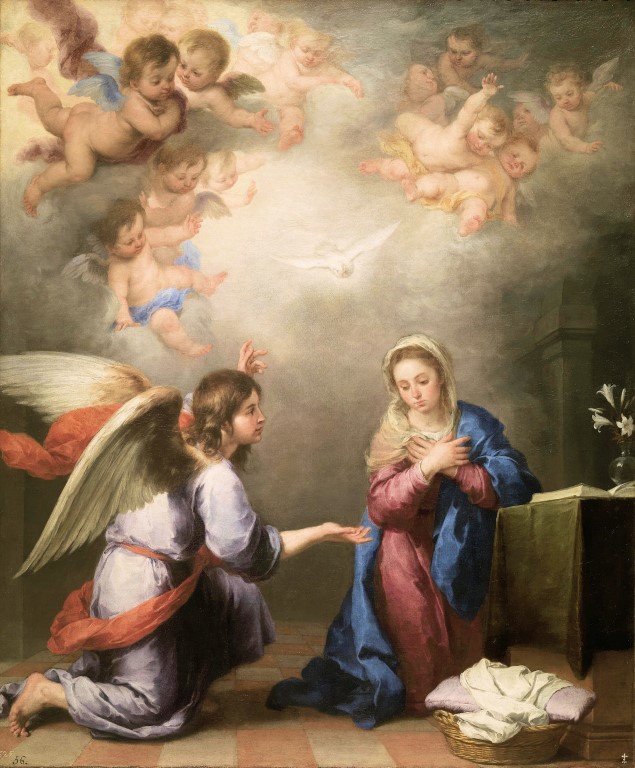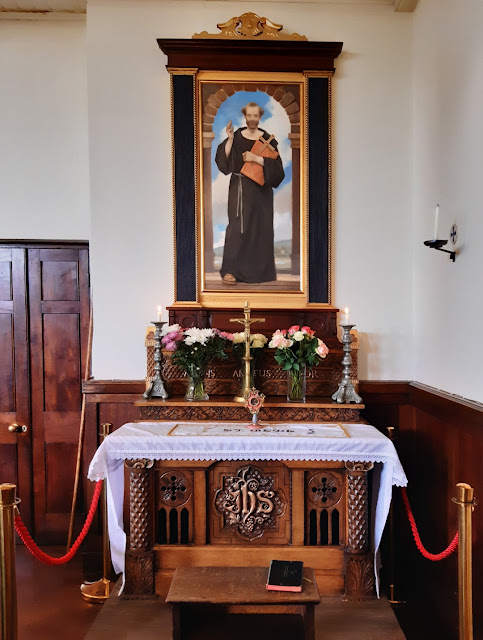Signals from Papal Vespers
Several blogs have commented on the vestments used by Pope Benedict at yesterday's first Vespers for the first Sunday of Advent. See Shouts in the Piazza: What a difference a year makes for before and after photos. You should also notice the Formale.
I freely confess that I would never have known anything about this without seeing the article on NLM by Nicola de Grandi The Penitential Papal Formale (it's back). The Formale is the clasp or "morse" used to hold the two sides of a cope together. It is only worn by a diocesan bishop when he pontificates in his own diocese. I'll leave de Grandi to continue:
 So why is any of this in the least bit important? "Jesus didn't wear a gold clasp on his cope ... I remember a mission station where the only vestment we had was an old sack and it was all very prayerful ..." Yes, yes, yes. The point is that we have a rich liturgical heritage that has effectively been proscribed for decades. The Holy Father sets an example to the universal Church and is demonstrating in small ways what it means to say that:
So why is any of this in the least bit important? "Jesus didn't wear a gold clasp on his cope ... I remember a mission station where the only vestment we had was an old sack and it was all very prayerful ..." Yes, yes, yes. The point is that we have a rich liturgical heritage that has effectively been proscribed for decades. The Holy Father sets an example to the universal Church and is demonstrating in small ways what it means to say that:
For priests who have been opposed and sneered at for reintroducing the older form of Mass or for introducing traditional elements into the Novus Ordo, these signals from Rome are important. The Holy Father is giving his personal stamp of authority to show that the use of beautiful vestments, solemn ritual and the sense of the sacred, is not naughty or disobedient, not against the spirit of Vatican II or the "mind of the Church" but proper, legitimate, and expressive of the continuity of the Church today with the heritage of her tradition.
And since Jesus deigns to be substantially present in the Eucharist, even when he is treated carelessly, disrespectfully or even sacrilegiously, I think he will be pleased with Pope Benedict too for guiding the Church to a more reverent celebration of the Liturgy.
I freely confess that I would never have known anything about this without seeing the article on NLM by Nicola de Grandi The Penitential Papal Formale (it's back). The Formale is the clasp or "morse" used to hold the two sides of a cope together. It is only worn by a diocesan bishop when he pontificates in his own diocese. I'll leave de Grandi to continue:
Traditionally, the Sovereign Pontiff used three kinds of formalia: the precious one, used in the most solemn occasions, studded with gems; the ordinary one, shaped like a golden dove; and the penitential one, with three pinecones placed in a triangular pattern.Here it is:
The penitential one wasn't used since 1969, but the Holy Father has decided to restore its usage right for the first Sunday of Advent.
 So why is any of this in the least bit important? "Jesus didn't wear a gold clasp on his cope ... I remember a mission station where the only vestment we had was an old sack and it was all very prayerful ..." Yes, yes, yes. The point is that we have a rich liturgical heritage that has effectively been proscribed for decades. The Holy Father sets an example to the universal Church and is demonstrating in small ways what it means to say that:
So why is any of this in the least bit important? "Jesus didn't wear a gold clasp on his cope ... I remember a mission station where the only vestment we had was an old sack and it was all very prayerful ..." Yes, yes, yes. The point is that we have a rich liturgical heritage that has effectively been proscribed for decades. The Holy Father sets an example to the universal Church and is demonstrating in small ways what it means to say that:"What earlier generations held as sacred, remains sacred and great for us too, and it cannot be all of a sudden entirely forbidden or even considered harmful. It behooves all of us to preserve the riches which have developed in the Church's faith and prayer, and to give them their proper place."I think that we can be confident that the Holy Father will demonstrate this not only in what he wears for the Liturgy and in his manner of celebrating it, but also, gradually, in the organic reform of the reform of the Papal Liturgy.
For priests who have been opposed and sneered at for reintroducing the older form of Mass or for introducing traditional elements into the Novus Ordo, these signals from Rome are important. The Holy Father is giving his personal stamp of authority to show that the use of beautiful vestments, solemn ritual and the sense of the sacred, is not naughty or disobedient, not against the spirit of Vatican II or the "mind of the Church" but proper, legitimate, and expressive of the continuity of the Church today with the heritage of her tradition.
And since Jesus deigns to be substantially present in the Eucharist, even when he is treated carelessly, disrespectfully or even sacrilegiously, I think he will be pleased with Pope Benedict too for guiding the Church to a more reverent celebration of the Liturgy.


